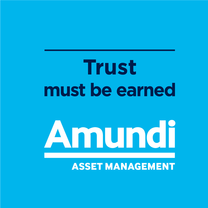Newsroom

Price dislocations lead to a rise in contrarian views
The hot summer in emergingmarkets (EM) has been a key investor theme in the third quarter of this year.While the ongoing US/China trade tensions continue to weigh on investor sentiment, the sequence of country-specific stories (Turkey, Argentina and South Africa) contributed to the almost indiscriminate repricing of EM assets, starting with plummeting EM currencies.
The causes of the collapse seen in the currencies’ values in these countries are different (need to apply for IMF aid for Argentina; balance of payment crisis in Turkey, accelerated by the perceived lack of independence of the central bank; the start of an economic recession in South Africa, with additional concerns regarding the land reform plan).
However, what all these countries had in common are some areas of vulnerability, starting with government deficits and dependence on foreign funding, often denominated in USD, which resulted in a higher exposure to multiple headwinds that are surfacing in this late phase of the cycle. On the opposite side, strong economic momentum in the US (with 4.1% GDP growth in Q2 2018, the highest level since Q2 2014), shrinking global liquidity, higher US rates, and a strengthening US dollar are all forces driving outflows from EM and making US assets more attractive.
Yet, in a late cycle phase, a small size problem (Turkey+Argentina+South Africa make up only around 3% of the global economy*) can turn into a catalyst for a risk-offmode in the EMarea. However, we do not expect to see a broadermarket capitulation or systemic risk. The trigger for either of these issues would be a marked slowdown in China, which is not our main scenario. In fact, credit growth in China, certainly a higher risk for global economy, is showing further signs of stabilisation, with Chinese policymakers acting to keep the monetary stance on the easing side and shifting the fiscal stance to be more supportive.
Going forward, in a phase of slowing global economicmomentumand a late business cycle, we expectmarket participants to remain vigilant in light of upcoming political events. In this new phase, directional markets leave room for less directional markets, with more divergences in styles/factors and higher rotation in investment themes, to extract the remaining value. In our view, recent dislocations will lead to value entry points opening up. Opportunities may arise in some quality and value parts of equity markets, in relative value trades across yield curves, and in currencies to play CB divergences. In this environment, Europe, which has not been in favour to the same extent as theUS,will become more attractive, in our view, supported by cheap valuations (assuming that Italian headwinds dissipate -- our assumption beyond likely tensions arising first).
In EM, price dislocation has been more pronounced. Significant noise will continue to be a distraction in the short term, but we think an entry point will open up in the coming months (after Brazilian and US midterm elections). This will require a selective approach to countries and names with decent fundamentals, though having been disproportionally hit during the selloff. Strong portfolio construction discipline, with a focus on liquiditymanagement and macro and bottom-up research, will represent the compass to navigate this market phase and indicate how/when to rotate into the most compelling themes. With less beta-driven markets, expect alpha to be the name of the game in the coming months.
Experts
Vincent has been Group Chief Investment Officer since February 2022. Previous to that, he was the Group Deputy CIO of Amundi since 2015. He is a member of the Globa[...]
Read moreMonica Defend, Head of Amundi Investment Institute. Monica is Head of the Amundi Investment Institute, which was created in February 2022, and a member of Amundi's Exe[...]
Read moreLinked Topic

United Kingdom, September 13, 2018
Amundi Cross Asset Investment Strategy - September 2018
10 years from Lehman: reality check
About Amundi
About Amundi
Amundi, the leading European asset manager, ranking among the top 10 global players[1], offers its 100 million clients - retail, institutional and corporate - a complete range of savings and investment solutions in active and passive management, in traditional or real assets. This offering is enhanced with IT tools and services to cover the entire savings value chain. A subsidiary of the Crédit Agricole group and listed on the stock exchange, Amundi currently manages more than €2.3 trillion of assets[2].
With its six international investment hubs[3], financial and extra-financial research capabilities and long-standing commitment to responsible investment, Amundi is a key player in the asset management landscape.
Amundi clients benefit from the expertise and advice of 5,600 employees in 35 countries.
Amundi, a trusted partner, working every day in the interest of its clients and society
Footnotes
- ^ [1] Source: IPE "Top 500 Asset Managers" published in June 2024 based on assets under management as of 31/12/2023
- ^ [2] Amundi data as at 31/03/2025
- ^ [3] Paris, London, Dublin, Milan, Tokyo and San Antonio (via our strategic partnership with Victory Capital)
Footnotes





